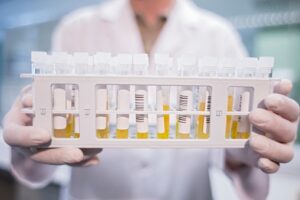Beginning in 1992, the U.S. has used a standard weight-based nomogram to guide appropriate plasma collection targets—15% to 42% of a donor’s total plasma with a maximum of 800 mL per donor. In late 2020, however, the FDA approved a novel technology-enabled nomogram that allows for a personalized amount of plasma to be donated based on the donor’s weight, height, and hematocrit with the total set to 28.5% of the total plasma, up to 1000 mL per donor. In order to confirm the safety and the potential impact on donor return rates, researchers analyzed data from 4.8 million donations from over 414,000 donors at over 100 centers from more than 30 U.S. states between 2021 and 2022. Hypotensive adverse events (incidence rate of 0.0998%) and weekly donor return rates were similar with the new personalized nomogram compared to data from plasma donors collected in 2016 and 2018. Average plasma collection volumes, however, increased over time by 8.5% (66.39 mL; p<0.0001). This novel, personalized nomogram may help meet growing demand for plasma and plasma-derived products without compromising donor safety.
Reference:

